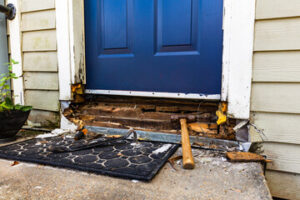Foundations are critical structural elements that provide stability and support to buildings. Over time, various factors such as soil movement, moisture fluctuations, and natural wear can cause foundation issues. These problems can manifest in the form of cracks, uneven floors, or doors and windows that no longer close properly.

Addressing foundation issues promptly is essential to maintaining the structural integrity of a building and preventing further damage. There are several foundation repair techniques, each suited to specific conditions and types of damage. Understanding these methods can help homeowners and property managers make informed decisions when faced with foundation problems. Contact Foundation Repair Plano TX for professional help.
One of the most common foundation repair techniques involves underpinning, a process that strengthens the foundation by extending its depth or increasing its load-bearing capacity. This can be achieved through different methods such as helical piers, push piers, and drilled concrete piers. Helical piers are steel shafts with helical plates that are screwed into the soil beneath the foundation until they reach stable ground. This technique is particularly useful in areas with poor soil conditions or fluctuating moisture levels. Push piers, on the other hand, are driven deep into the ground using hydraulic pressure. These piers are ideal for stabilizing foundations that have settled due to weak or shifting soil. Drilled concrete piers involve creating deep cylindrical holes that are filled with concrete to provide additional support and prevent further settlement.
Another widely used foundation repair method is slabjacking, also known as mudjacking, which is commonly applied to concrete slab foundations that have sunk or become uneven. This process involves injecting a slurry mixture of cement, sand, and other materials beneath the affected slab to raise it back to its original level. Slabjacking is a cost-effective solution for minor settlement issues and can be completed relatively quickly. However, it is not suitable for cases where extensive structural damage has occurred or when the underlying soil conditions are highly unstable.
For foundation cracks and minor structural damage, epoxy or polyurethane injections are often used. These injections help seal cracks and prevent moisture from seeping into the foundation, reducing the risk of further deterioration. Epoxy injections are particularly effective for structural repairs, as they create a strong bond and restore the foundation’s original strength. Polyurethane injections, on the other hand, are more flexible and better suited for sealing cracks that are exposed to moisture and temperature fluctuations. These repair methods are relatively non-invasive and can extend the lifespan of the foundation if applied correctly.
Another effective foundation repair technique involves installing drainage systems to manage water around the foundation. Excess moisture can lead to soil expansion and contraction, which contributes to foundation movement and instability. French drains, surface drains, and sump pumps are commonly used to redirect water away from the foundation and prevent moisture-related damage. Proper drainage solutions not only help protect the foundation but also improve the overall longevity of the structure.
In some cases, soil stabilization techniques may be necessary to reinforce the ground beneath the foundation. Chemical grouting, soil compaction, and the use of geopolymers can help improve soil strength and prevent further settlement. Chemical grouting involves injecting a stabilizing solution into the soil to solidify loose or weak ground, while soil compaction uses mechanical force to densify the soil and increase its load-bearing capacity. Geopolymers are advanced materials that can be injected into the ground to create a strong, durable base for the foundation.
For homes with crawl spaces, foundation repairs may involve reinforcing or replacing deteriorating support beams and piers. Crawl space encapsulation is another solution that helps control moisture levels and prevent wood rot and mold growth. This process involves sealing the crawl space with a vapor barrier and installing dehumidifiers to maintain a dry environment. Proper crawl space maintenance can significantly reduce the risk of foundation issues and improve indoor air quality.
Choosing the right foundation repair method depends on several factors, including the severity of the damage, soil conditions, and the type of foundation. Professional assessments are essential to determine the most effective solution for each specific case. In some situations, multiple repair techniques may be combined to achieve optimal results. Regular foundation inspections and proactive maintenance can also help identify potential issues early and prevent costly repairs in the future.
While foundation repairs can be a significant investment, addressing issues promptly can save homeowners from more extensive and expensive structural damage. Understanding the different foundation repair techniques and their applications allows property owners to make informed decisions and ensure the stability and safety of their buildings for years to come. The longevity of a structure heavily depends on how well the foundation is maintained and repaired when necessary. Investing in the right repair techniques ensures that minor foundation problems do not escalate into severe structural failures.
Soil conditions and moisture levels should be carefully monitored to prevent future foundation damage. Proper landscaping, such as grading the soil away from the foundation and using gutters and downspouts to divert water, can significantly contribute to foundation stability. Keeping trees and large vegetation away from the foundation also helps minimize soil displacement and root-related disturbances. Property owners should also be aware of warning signs such as interior wall cracks, sticking doors, or sudden changes in floor levels, as these could indicate potential foundation problems. Regular monitoring and seeking professional guidance as soon as issues arise will help maintain the integrity of the building and avoid costly and extensive repairs. With proper care and timely interventions, a well-maintained foundation ensures a safe and durable structure for many years.
